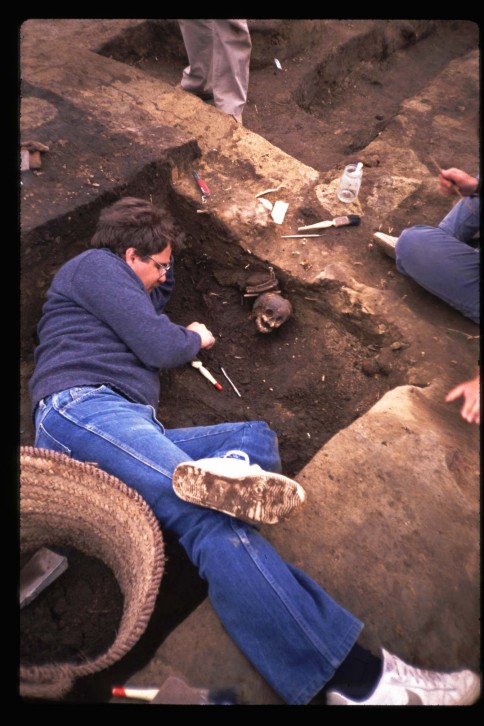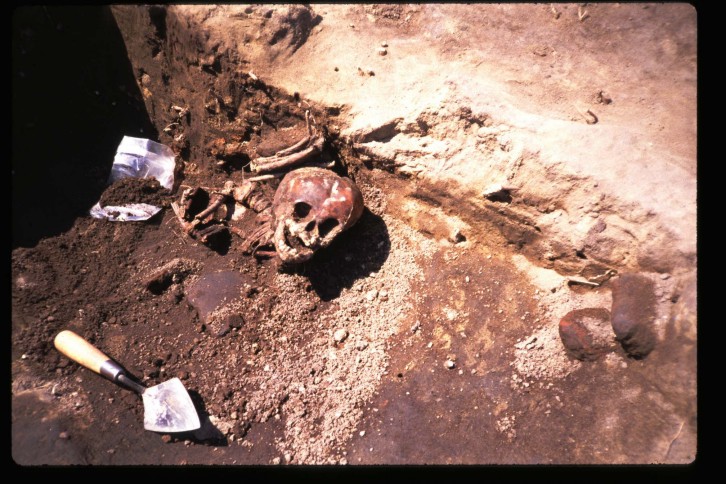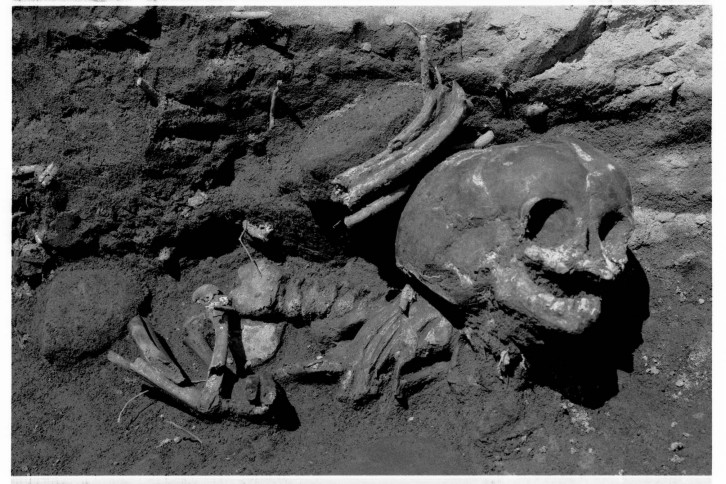Within Room 4 Jenny was excavating next to one of the room walls and found the skeleton. This is of Richard Redding doing some of the initial excavation of the skeleton:

Full image here.
He started them and then let us finish pedestalling them. The water table here is very near the surface -- only like 1.5 meters down in the dry season, so the bones were fairly soft and friable. Hence, great care was needed to clear away the sediment and expose the skeleton without damaging it. Here are two more after it was finished:

Full image here.

Full image here.
The sediment indicated that the wall had been partly hollowed out to make a small space for the body and then it was covered up by wall collapse material. There were no grave goods with the body; there are a few rib bones of probably a sheep/goat right above it, but the excavator determined these were not part of the burial. Sex was indeterminate, and age was probably 1-2 years old. We didn't employ a forensic anthropologist since we weren't particularly interested in the burials.
As I said, there were several of these and other adult burials within the architecture. A few of the adults had mud brick or wooden coffins, but the children were mostly just buried. They have mostly been put in the First Intermediate Period because they were intrusive into the Old Kingdom deposits, but I'm not so sure. I wrote a paper on the burials that will probably go into the monograph, and I argue that some/many may be Old Kingdom. Unfortunately, only one had any artifactual material that could possibly be dated, so it's tough to tell.